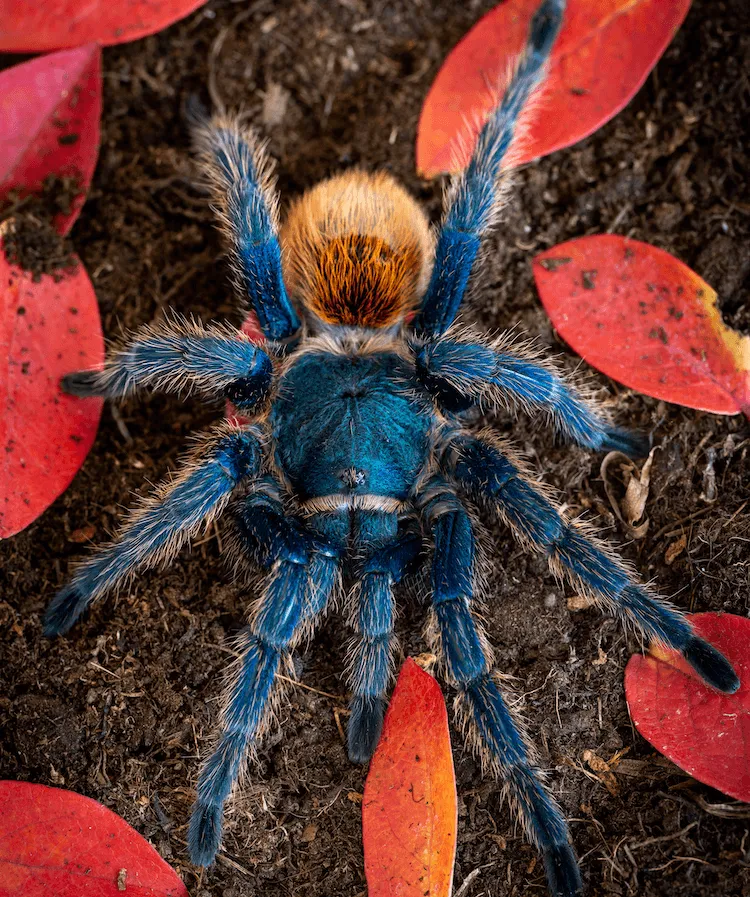What is a Green Bottle Blue Tarantula (GBB)
The Green Bottle Blue Tarantula, scientifically known as Chromatopelma cyaneopubescens, is a vibrant and captivating species highly sought after by tarantula enthusiasts. Native to the dry, scrubby environments of Venezuela, this tarantula gets its common name from the striking coloration of its body. Adults display a metallic blue coloration on their legs and carapace, complemented by a vibrant green abdomen. These tarantulas are not only beautiful but also possess unique behaviors, making them a fascinating addition to any collection. Their care, however, requires attention to specific environmental needs to ensure their well-being. This comprehensive care sheet will guide you through every aspect of raising a healthy and thriving Green Bottle Blue Tarantula.
Origin and Habitat of the GBB
Understanding the natural habitat of the Green Bottle Blue Tarantula is crucial for providing the right environment in captivity. These tarantulas are endemic to the Paraguaná Peninsula in Venezuela, where they inhabit arid and semi-arid scrublands. Their environment is characterized by sparse vegetation, rocky terrain, and a distinct dry season. They are primarily terrestrial but are also known to create webs in shrubs and small trees. Mimicking these conditions is key to successful GBB husbandry. This includes providing a habitat with low humidity levels, good ventilation, and appropriate temperatures to replicate their natural environment. The more you understand their origin, the better you can provide for their needs.
Understanding the GBB Temperament
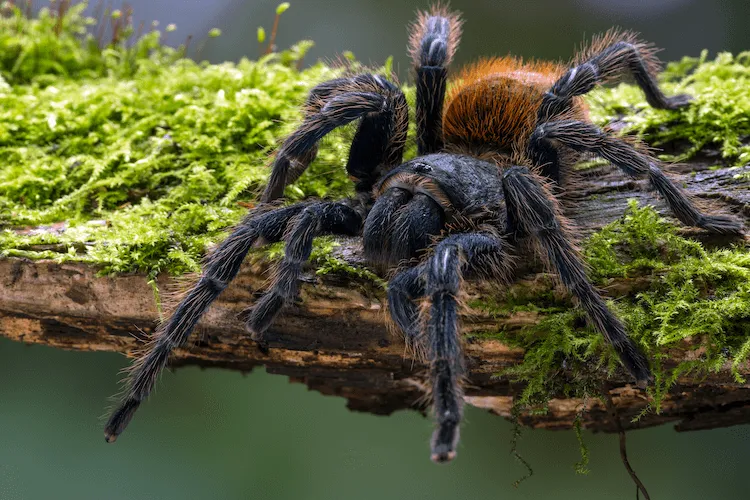
Green Bottle Blue Tarantulas are generally considered to be a bit skittish and defensive, which is important to consider when handling them. While they aren’t particularly aggressive, they are known to be fast and may try to escape if startled. They possess urticating hairs on their abdomen that they can flick as a defense mechanism. When agitated, they may also display a threat posture. Therefore, it’s important to handle them with care and respect their space. Observation of your tarantula’s behavior is crucial; signs of stress or discomfort should be taken seriously, and handling should be avoided if the tarantula appears agitated or unhappy.
Setting Up the Perfect GBB Enclosure
Creating the right enclosure is fundamental to the health and happiness of your Green Bottle Blue Tarantula. This involves careful consideration of the terrarium, substrate, and other accessories. The goal is to replicate their natural habitat as closely as possible, which will enable your tarantula to thrive. You need to balance the needs of the GBB, which includes temperature, humidity, ventilation, and security. Investing time in the initial setup will pay off in the long run, ensuring that your tarantula lives a long, healthy, and stress-free life.
Choosing the Right Terrarium
A suitable terrarium should be appropriately sized for the tarantula’s stage of life. For juveniles, a 10-gallon tank or a similar-sized enclosure will suffice. As the GBB grows, you will need to upgrade to a larger enclosure; an adult should have at least a 20-gallon long tank, providing enough floor space for movement. It’s important to ensure that the terrarium has secure ventilation to prevent moisture build-up. A secure lid is also crucial to prevent escapes. Acrylic or glass enclosures are both viable options, but always ensure the chosen material is suitable for the specific needs of your tarantula.
Substrate Selection
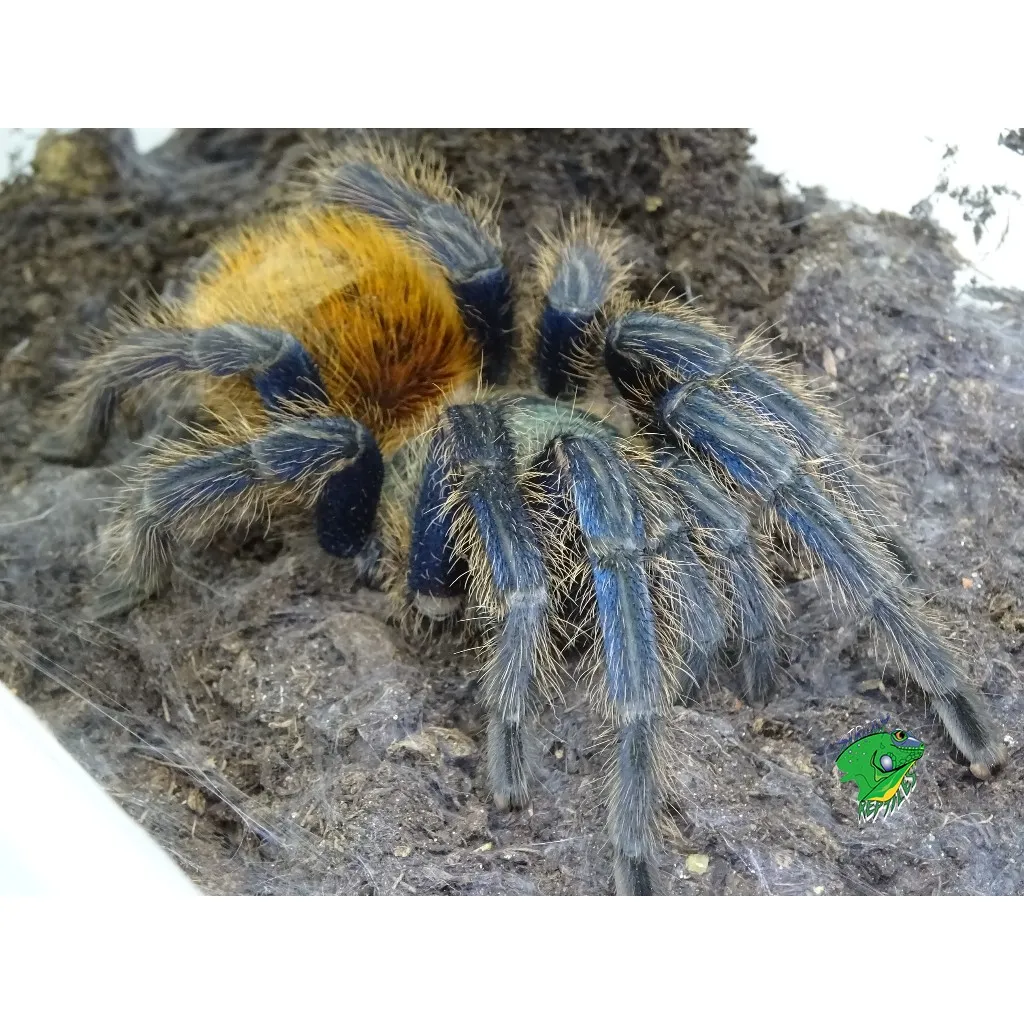
The substrate is a crucial part of a GBB’s enclosure. The substrate helps to maintain the appropriate humidity level, provides a surface for the tarantula to walk on, and can also serve as a place for it to burrow or create webs. For Green Bottle Blues, a substrate that allows for moderate moisture retention is ideal. A mixture of peat moss, vermiculite, and a small amount of coco fiber works well. The substrate should be kept slightly damp, not wet, as GBBs prefer drier conditions. The substrate should also be deep enough, generally 3-4 inches deep to allow for burrowing and anchoring webs.
Essential Enclosure Accessories
Essential accessories include a shallow water dish, a piece of cork bark or other shelter, and some artificial or live plants. A shallow water dish is important for providing a constant source of fresh water. The water should be changed regularly to prevent bacteria growth. Cork bark provides a place for the tarantula to hide and feel secure. Artificial plants add a decorative touch but are also beneficial for web-building. The inclusion of these accessories will add to the enrichment of the GBB’s environment, making them feel more secure, allowing for web construction and a place to retreat.
Maintaining Ideal Environmental Conditions
Maintaining the correct environmental conditions is vital for the health and well-being of your GBB. This involves monitoring and controlling both the temperature and humidity levels within the enclosure. Regular checks and adjustments are necessary to ensure that these parameters stay within the ideal ranges. Proper ventilation is also key. Providing an appropriate climate helps prevent health issues, and ensures that your tarantula will thrive. Careful attention to these environmental factors will make for a happy and healthy pet tarantula.
Temperature and Humidity
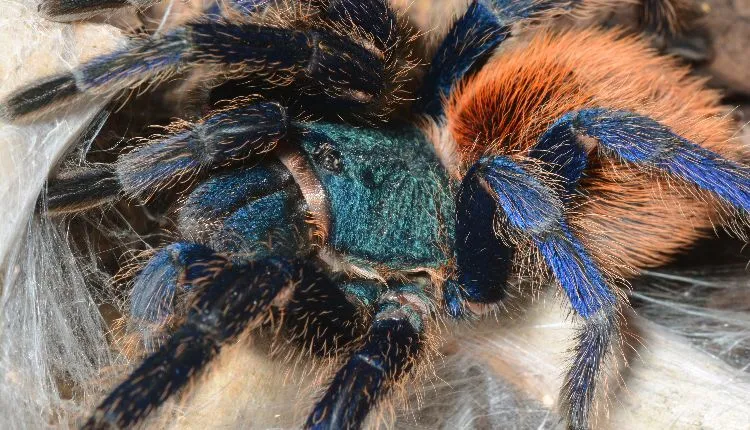
The ideal temperature range for a Green Bottle Blue Tarantula is between 75-85°F (24-29°C). Providing a temperature gradient within the enclosure can be beneficial, allowing the tarantula to regulate its body temperature. Humidity levels should be kept relatively low, around 60-65%. You can monitor both temperature and humidity using a digital thermometer and hygrometer. Light misting of one side of the enclosure once or twice a week can provide the necessary moisture without causing it to become too humid. Avoid directly spraying the tarantula.
Ventilation
Good ventilation is essential for preventing mold and mildew growth in the enclosure. Proper ventilation also helps to maintain the correct humidity level and prevents the buildup of harmful gases. Enclosures should have cross-ventilation, which can be achieved by having vents on opposite sides of the tank. This will allow for air circulation. Ensure that the ventilation is secure enough that the tarantula cannot escape through it. Regular cleaning of the enclosure and the removal of uneaten food will further maintain optimal air quality.
Feeding Your GBB
Feeding your Green Bottle Blue Tarantula correctly is crucial for its health and growth. Providing the right food, in the appropriate amounts, is critical. You will want to ensure that you’re giving your tarantula a balanced and nutritious diet, and preventing overfeeding. Monitoring your tarantula’s eating habits will allow you to make adjustments as needed, ensuring that it thrives. A well-fed tarantula is a happy and healthy tarantula.
What to Feed a GBB Tarantula
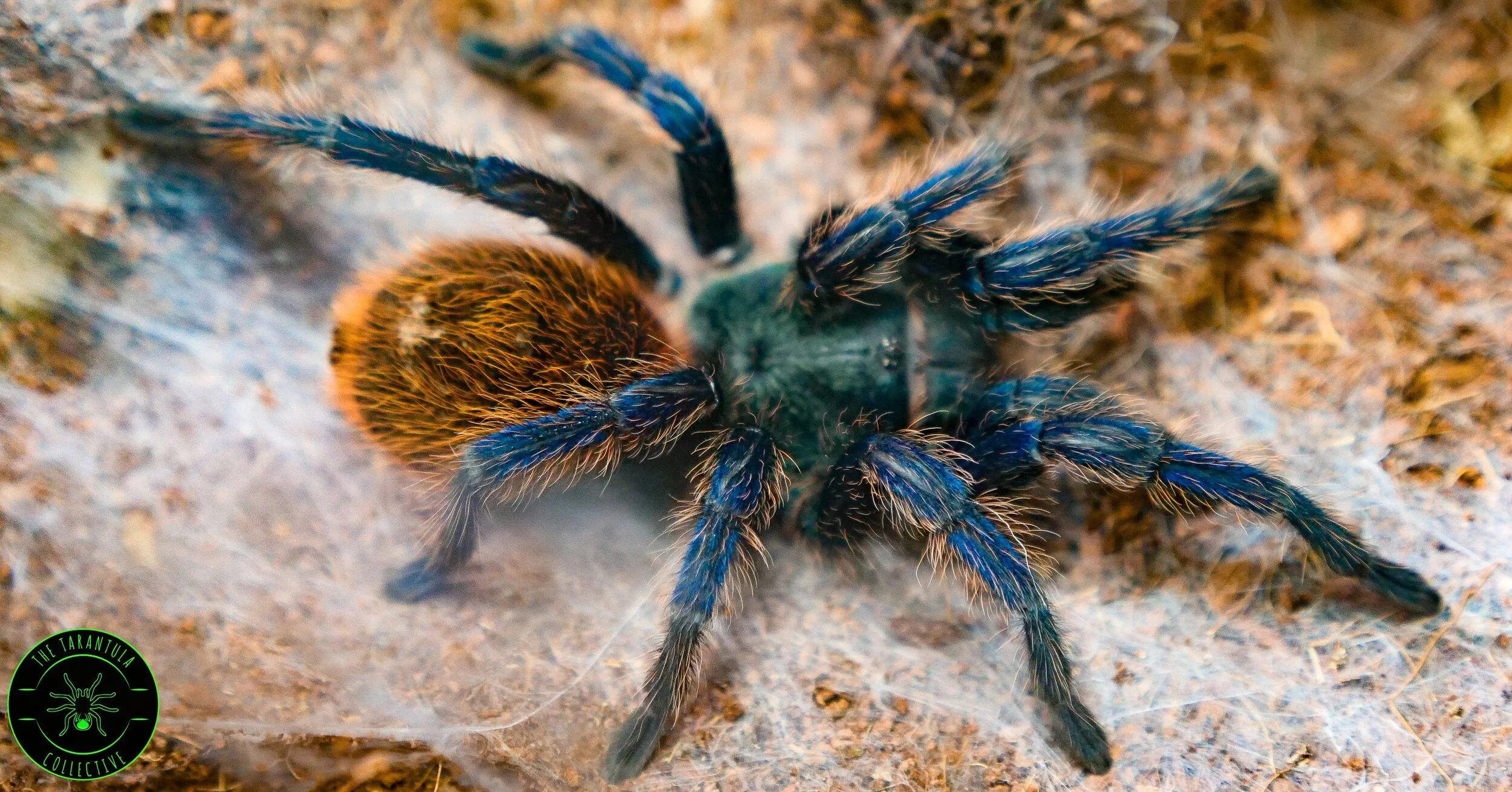
The GBB is an opportunistic feeder, but its primary diet should consist of insects. Crickets, mealworms, and roaches are all suitable options. The size of the prey should be appropriate for the size of the tarantula; a general rule is to feed insects no larger than the tarantula’s body. You can vary the diet with occasional treats like small bits of pre-killed pinky mice for adults, but these should be offered sparingly due to their high fat content. Always ensure that the prey insects are gut-loaded with nutritious food before being offered to your tarantula.
Feeding Frequency and Portion Size
Juvenile Green Bottle Blue Tarantulas should be fed more frequently, roughly twice a week. Adults can be fed less often, generally once every one to two weeks. The amount of food should be adjusted based on the tarantula’s size and appetite. A healthy tarantula will usually eat its prey within a few hours. Uneaten prey should be removed within 24 hours to prevent stress to the tarantula or potential harm. Avoid overfeeding, as it can lead to health problems. Monitor the tarantula’s abdomen for signs of fullness.
Watering and Hydration
Providing a consistent water source is essential for the GBB’s health. A shallow water dish should always be available in the enclosure, and the water should be changed regularly to prevent contamination. In addition to the water dish, you can lightly mist one side of the enclosure once or twice a week to maintain appropriate humidity levels. Always use dechlorinated water to prevent potential harm to your tarantula. Water is essential for all bodily functions, including molting, so providing adequate hydration is of utmost importance.
Recognizing and Addressing Common Health Issues
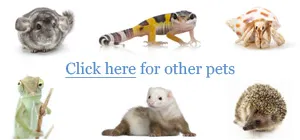
Like any pet, Green Bottle Blue Tarantulas can experience health problems. Recognizing the signs of illness and acting promptly is key to ensuring the well-being of your tarantula. Prevention is also an important strategy; providing proper care and a suitable environment can help to prevent many common health issues. This includes everything from knowing how to react in case of a bad molt, to recognizing external parasites. Being prepared to react swiftly and effectively is key to the success of caring for a GBB.
Moulting
Moulting is a natural process where tarantulas shed their exoskeletons to grow. Before moulting, a tarantula will typically stop eating, become lethargic, and may spend more time hiding. The tarantula will usually flip onto its back during the moult. During this time, it is extremely vulnerable, so avoid disturbing it. After moulting, it’s crucial to allow the tarantula to harden its new exoskeleton before offering food, usually a week or two. If a moult goes wrong, which can happen with insufficient humidity or stress, consult with an experienced tarantula keeper or a veterinarian familiar with tarantulas.
Parasites and Infections
Although rare in captive tarantulas, external parasites like mites can be an issue. These tiny pests can attach to the tarantula’s body and feed on its hemolymph. Signs of an infestation include small, moving dots on the tarantula’s body, often in the joints or around the mouthparts. If you suspect a mite infestation, quarantine the affected tarantula and consult with an experienced keeper or veterinarian for treatment options. Bacterial or fungal infections can also occur, usually due to poor enclosure conditions. Ensure your GBB’s enclosure is kept clean and that any uneaten food is promptly removed to prevent these issues.
Handling Your GBB
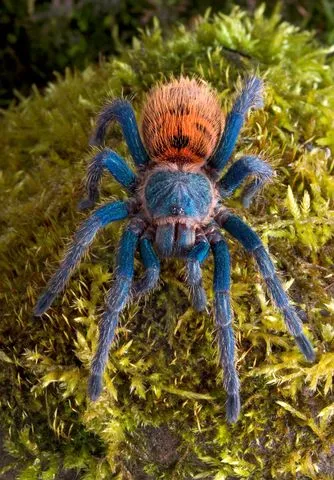
Handling a Green Bottle Blue Tarantula is a decision that should be made with caution. While many keepers enjoy handling their tarantulas, it is important to remember that the GBB can be skittish and possess urticating hairs, which can cause skin irritation. Weigh the risks and benefits, and always prioritize the tarantula’s well-being. Handling should be minimized if the tarantula seems stressed or agitated. If you decide to handle your GBB, do so with care and follow all safety protocols.
Is Handling Necessary?
Handling a tarantula is not necessary for its well-being. Tarantulas do not need to be handled to thrive in captivity. In fact, excessive handling can be stressful for the tarantula and may lead to defensive behaviors. Many experienced keepers rarely handle their tarantulas, preferring to observe and interact with them from a distance. Always assess your tarantula’s temperament before considering handling; some individuals are more tolerant than others. The best approach is to prioritize your tarantula’s comfort and well-being.
Safety Precautions
If you choose to handle your GBB, take several safety precautions. Always handle the tarantula close to the ground to minimize the risk of injury if it falls. Avoid sudden movements, and speak in a calm and soothing voice. Be aware of the tarantula’s body language; if it displays a threat posture, such as raising its front legs or flicking its urticating hairs, put it back in its enclosure immediately. Always wash your hands thoroughly after handling. If you do get urticating hairs on your skin, remove them with tape and avoid rubbing the affected area.
Breeding GBB Tarantulas
Breeding Green Bottle Blue Tarantulas can be a rewarding experience for experienced keepers. It involves careful planning, providing appropriate conditions, and understanding the tarantula’s reproductive behavior. Success requires patience, knowledge, and the willingness to provide the specialized care needed for both the adults and the spiderlings. If you are considering breeding your GBBs, do thorough research and be prepared for the time commitment and responsibilities involved.
Identifying Sex
Determining the sex of a GBB is essential for breeding. This can usually be done by examining the tarantula’s exuviae (shed exoskeleton) after a moult. Look for the presence of spermathecae, which are located in the abdomen of female tarantulas. Another method involves examining the underside of the tarantula using a bright light. Males have a pair of modified pedipalps that they use for mating. Identifying the sex with certainty can only be done by examining the exuviae, but you may also be able to differentiate the sexes by the shape of their abdomens and the appearance of their legs.
Mating and Egg Sac Management
Mating GBBs involves introducing a mature male to a receptive female. This should be done in a controlled environment, with the female well-fed to reduce the risk of her attacking the male. If the mating is successful, the female will create an egg sac. It is very important to remove the egg sac from the female’s enclosure after a period of time, usually a few weeks, to help the spiderlings to thrive. The egg sac should then be incubated under the appropriate temperature and humidity conditions. Spiderlings require specialized care, including providing them with small prey and a suitable environment. The hatching and rearing of the spiderlings is an involved process that requires patience and dedication.
In conclusion, raising Green Bottle Blue Tarantulas is a rewarding experience for any tarantula enthusiast. By following this care sheet, you can provide your GBB with a healthy and enriching environment. Remember to prioritize their specific needs. Maintaining proper environmental conditions, providing a suitable diet, and handling with care are crucial factors. With dedication and knowledge, you can enjoy the beauty and unique behaviors of these amazing creatures for years to come. Remember that every tarantula is an individual, and the best keepers are always learning and adapting their care to meet the specific needs of their pets. Good luck, and enjoy the journey of tarantula keeping!
